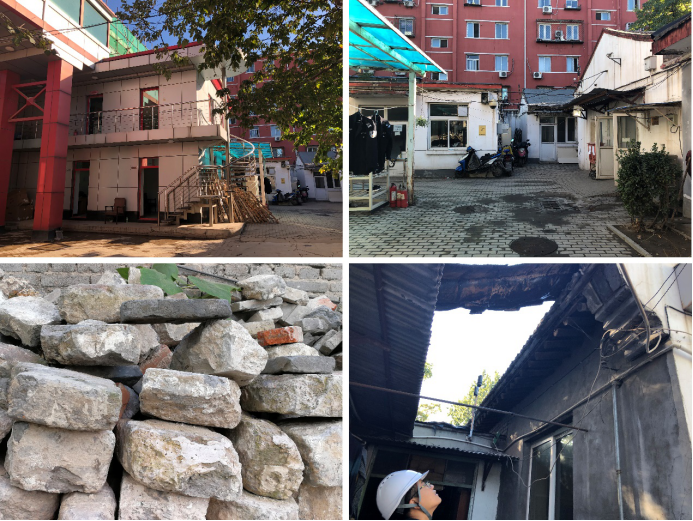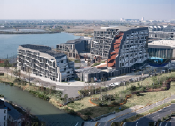Because the official account official has adjusted the push rules, if you want to continue to receive the contents of the official account, please set the public building number of the building as the star sign, and more points of the “look at” and “praise” in the end of the article
. 
“If you want to continue to receive the official account, please note that the” WeChat “is a public key
. 
Star setting: enter the official account homepage, click the “top” corner, click “set star”, and the official account will appear yellow Pentagram (Android and iOS user operation alike)
. 
Source: homestay state, central China architecture
. 
With the rapid development of urbanization and the upgrading of industrial structure, many old factories have lost their original uses
. 
Nowadays, the awareness of protecting history and culture is growing
. 
More and more old factories have been reconstructed
. 
However, different types of old buildings have different development directions
. 
Do they “keep” or “remove”? Continuity or innovation? How to achieve a balance between the new and the old? This paper sorted out 8 recent cases of renovation of old factory buildings, and discussed 8 excellent cases of renovation of old factory buildings with you
. 
01
. 
Surprise transformation from old factory buildings to experiential hotels
. 
02
. 
Old industrial factory buildings incarnate diversified and interesting living space
. 
03
. 
Old clothing factory transformed into children’s activity center
. 
04
. 
Transformation of industrial red brick warehouse Energy space | echo house | 05
. 
Chongqing printing factory transformation characteristic office space | raise your eyes and hang the screen | 06
. 
Old factory transformed into art community | Liangyou Hongfang culture and art community | 07
. 
Three story brick wall old factory transformation joint office space | happiness Park joint office 08
. 
Machine tool factory transformation Museum | Jiangnan Mint Museum and Jinji group headquarters office 01
. 
Shouchuang Shiqi hotel location: Beijing design company: Daga architects Grand View architectural design is located in the old factory area of Beijing Sanlu factory, Yongsheng lane, Dongcheng District, Beijing
. 
Now it is transformed into an innovative development platform to spread the national intangible cultural heritage culture
. 
The intangible cultural heritage theme hotel hidden in it hopes to create a special scene experience hotel integrating modern life and culture
. 
Before the reconstruction, the original three groups of buildings in the site were three flat top brick concrete warehouses in the southeast, two rows of abandoned buildings with sloping roof brick mixed structure in the west, and two dormitory buildings at the bottom of the overpass
. 
In the reconstruction design of grand view building, the three groups of buildings with independent dispersion and different preservation status should coexist orderly, and different guest room styles should be designed according to local conditions Different intangible cultural heritages are displayed in different ways
. 
The original old factory has a long history
. 
It has been built many times for more than a hundred years, and a large number of old bricks and tiles are left in the corner of the factory
. 
Fortunately, it was found and used in the design
. 
A public space with steel structure and glass daylighting roof is implanted in the site to connect the original three groups of buildings to form three inner courtyards
. 
At the same time, the use of glass daylighting roof ensures the natural daylighting of guest rooms
. 
The three indoor courtyards are functionally differentiated from each other, forming three kinds of public spaces of the hotel: reception space, communication space and traffic space
. 
There are 17 guest rooms in the hotel, and there are 6 types of rooms
. 
The display and requirements of intangible cultural heritage culture in each type of rooms are different, but they all need to transform a comfortable living environment
. 
First floor plan second floor plan 02
. 
MISA studio plus residence location: Hangzhou Design: Wanjing design project is located in a hollow old factory building
.
Its design purpose is to transform the abandoned space of the city into a diversified and interesting living space in the current environment of excessive simplification of work and living
.
Between the original space interval and the two factories, there is a freight passage, and the old steel structure light roof is left on the top
.
From the outside, there is no good environment around the building, but when you enter the interior, you will find that because of the existence of the atrium, the whole space feels very bright
.
The inner courtyard occupies one-third of the house
.
It provides a kind of contact with nature and reveals all aspects of nature
.
It is the center of work and life
.
It is also a device to exchange the light, wind, rain and other natural things that are disappearing in modern cities
.
The sky light penetrated into the courtyard, casting deep shadows on the walls and courtyard
.
Plan ﹣ elevation ﹣ 03
.
Location of children’s activity center: Beijing Design: redetects + Moguang building the predecessor of this project is a clothing factory built in the 1990s
.
After the owner bought the entire vacant factory, he plans to retain the original building and renovate it to a children’s science and Technology Museum, integrating Hotel, parent-child education, study tour camp, business and other comprehensive facilities The children’s activity center is a professional one
.
The whole factory area is mainly divided into the north and the south
.
The North Hospital is a single story single span workshop with bent structure, which used to be the most important production workshop in the clothing factory area
.
The South courtyard is a small bay red brick house with brick bearing wall and wood truss roof
.
Its original functions are warehouse, dormitory and canteen
.
Based on the scale and structural characteristics of the original building, the design focuses the functions of children’s science and Technology Museum, multi-function hall and restaurant that need large span space in the north area, and the hotel accommodation function in the south area
.
The largest space experience feature of Miyun garment factory renovation project is to create a scale close to people between the large-scale factory building and the vast mountains in the north
.
Through a series of space structures such as footpath, corridor, small square and court, the continuous three-dimensional landscape experience from the north courtyard activity space to the South courtyard accommodation area is connected
.
Comparative analysis before and after the transformation of the park} functional plan of the park} redetects + Moguang building 04
.
“Echo” house location: Beijing Design: KLC the project site is located near the Fifth Ring Road of Beijing, in the special boundary area between the city center and the suburbs
.
It’s an industrial block
.
The red brick warehouse is used in the 1960s
.
Customers bought an old red brick warehouse as the main studio and food bar
.
They only sold drinks made of organic plants
.
They asked the design team for design
.
The building needs to have two floors, including food laboratory, dining space, sales space, work area, gallery for team artists, office area and greenhouse
.
The design team designed the project according to the following eight rules
.
All of these rules have multiple perspectives, so the space they create is also very exciting
.
Moving line analysis concept: coexistence 1
.
The entrance should be obvious from the outside and have a sense of space
.
2
.
From the indoor to the outdoor, the scenery should be rich
.
3
.
Turn the low density and slender streamline into a space
.
4
.
Design a continuous space without partition or door, and determine the use of each indoor location according to the outdoor environment
.
5
.
When creating the building environment, the passive design should be considered first, and other mechanical equipment can be added
.
6
.
The hybrid structure system should not only emphasize the mechanical tension, but also express the flow of force
.
7
.
Building materials should be accessible to local construction technology, and should be able to connect the past with the future
.
8
.
Artifacts should be created in the sense of product and architectural design
.
There is no door in the interior space, trying to connect the space on the third floor with smell and sound
.
There is no strict rules for the use of space, which makes the space flexible and fuzzy
.
Customers can even sit in the middle of the traffic flow
.
At the same time, you can feel the natural light from any direction in the building, thus forming a three-dimensional spiral space, growing up like a plant
.
Plan of the first floor plan of the second floor plan of the third floor plan section 05
.
Place: Chongqing Design: qingweishe studio this project is an office space for the reconstruction of an old factory building, located in Chongqing No.1 printing plant built in the 1930s
.
Light industry does not leave too many traces to the house, just like a new blank house
.
The indoor space is 25 meters long, 5 meters wide and 6 meters high.
.



